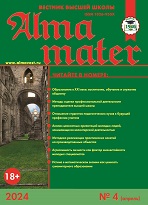https://doi.org/10.20339/AM.03-18.109
G.V. Avdoshin is Cand.Sci. (Philosophy), doc. at Kazan State Power Engineering University e-mail: avdoshing@gmail.com
Presented is analysis of the notion of “image” as philosophical category. In this article image is considered as intermediary stage between the realm of ideas and the world of things. In this status it determines the movement from ideas to things and backwards, that’s why for this reason it can be called “a guide”. In the author’s opinion, it is also reasonable to speak about manifestation of this process within the sphere of social being. In connection with that, here we can separate the sacred and the secular modes of life: the former focuses on person’s ascension from things to ideas, while the latter immerses the person in material world, dividing it from the eidetic realm. Both these modes, the author states, are being realized by the person through art, that is understood as practice of creation of things and in this meaning is related to any human activity.
Key words: platoizm, sacred/ secular, image, imagination, ideas and things, art.
References
1. Genon, R. The Reign of Quantity & Signs of the Times. Moscow, 2008.
2. Damaskin, I. On the Divine Images: Three Apologies against Those Who Attack the Divine Images. St. Petersburg, 2001.
3. Korben, A. History of Islamic Philosophy. Moscow, 2015.
4. Kumarasvami, A.K. The Philosophy of Mediaeval and East Art. In: The East & the West. Religion, mythology, symbolism & arts. Moscow, 2015, pp. 17–59.
5. Plato. The Republic. In: Collected works in 4 vols. Vol. 3. Moscow, 1994, pp. 79–421.
6. Corbin, H. The Imago Templi in Confrontation with Secular Norms. In: Temple and Contemplation. London, 1986, pp. 263–390.
7. Waldenfels, B. Das Rätsel der Sichtbarkeit. Suhrkamp Taschenbuch Wissenschaft, 2013, pp. 204–225.











.png)






